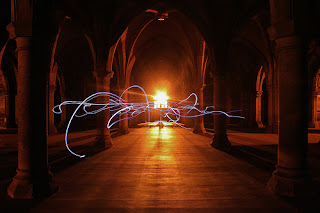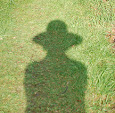Fifty years ago this past week, at the Edinburgh Festival, the Scottish composer Ronald Stevenson presented Dmitri Shostakovich with his large scale piano work entitled Passacaglia on DSCH. [1] To mark this anniversary there was a concert held last Friday at the Cathedral of the Isles in Millport (an island in the Clyde opposite Largs, Ayrshire, Scotland).
The composition is 80 minutes long and there are no breaks. It is often dissonant and very percussive, i.e. at one point the composer states that the fists should be used on the keyboard. Not for the faint-hearted ... but fortunately I was able to learn all about the piece before the performance. Richard Black had the stamina for the job and Alastair Chisholm, the organiser of the programme, turned the (141!) pages. The whole thing, of course, was terrific!
Passacaglia means, literally, to 'walk the street' - pronounced 'passa kal eya'. It comes from Spanish. (More familiar is pasodoble, the bullfight music meaning to 'walk double'.) It is used as a piece of music which starts with a ground bass and then makes lots of variations using the original motif.) [2]
There is a full video performance (71:17 minutes) by Mark Gasser on UTube here. It gives full sound as well as page by page sheet music. Then there is information about the composer on the Ronald Stevenson Society website here.
___________________________________________________
[1] The letters DSCH stand for Dmitri Shostakovich to whom the work is dedicated. When using German notation the DSCH letters become D, E Flat, C and B natural.
[2] Lower photo is John Albiston's photo of the Cloisters at Glasgow University taken August 2012.
___________________________________________________
[1] The letters DSCH stand for Dmitri Shostakovich to whom the work is dedicated. When using German notation the DSCH letters become D, E Flat, C and B natural.
[2] Lower photo is John Albiston's photo of the Cloisters at Glasgow University taken August 2012.






No comments:
Post a Comment